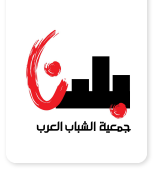Arab citizens of Israel- a sizeable minority of approximately 20% - are the poorest and most marginalized community in the country. Palestinian youth born in Israel- comprising over 1/2 of the one million Palestinians in Israel- bear the brunt of these economic, social and political conditions. According to the Israeli National Bureau of Statistics, over 1/2 of Arab children under 18 subsist below the poverty line. Furthermore, around 40% of Arab students in Israel drop out before they finish high school, and only 1/3 of Arab youth pass the matriculation exams required for entrance into higher education institutions. The ultimate result: growing unemployment in conjunction with increased criminal behavior and drug use among youth. This dismal situation stems mainly from the conditions created during the 1948 war and exodus, and from subsequent discriminatory Israeli government policy and displacement by the State. Palestinian students in Israel endure both overt and subtle discrimination by state institutions, manifested in unequal budget allocations and omissions in the official curricula. The Israeli public school system is largely divided into separate, segregated tiers for Jews and Arabs. The generality of Arab students receive less funding than those attending Jewish schools, and public Arab schools are notoriously under-funded compared with public Jewish schools. For instance, the elementary school in the village of Ein Mahel, near Nazareth, is so crowded that students spill over to tiny impromptu classrooms in homes across the street. The municipality rents these rooms because it does not have sufficient funds, or lands, with which to build additions. The State of Israel will not zone more land for building in the village. Meanwhile, a few kilometers away in the Jewish city of Nazaret-Elit, the local school boasts an Olympic swimming pool and immense playing field. Clearly, upon receiving a substandard education, Arab students are far less likely to complete their education and less equipped with the knowledge and skills required for success in the wider world. Further, educational programs designed to enhance cultural identity are conspicuously absent. Students in Arab schools learn about Jewish history, the Holocaust, and the creation of the State in 1948, while learning next to nothing about hundreds of years of Islamic civilization, their own history during the Ottoman Empire, or under colonialism. Curricula addressing the events of 1948 represent an exclusively Zionist perspective. Lacking sufficient opportunities to examine themselves as "Palestinians", "Israelis", "citizens", "Arabs" - or any combination of these national, civic and cultural identities - many Palestinian youth in Israel emerge into a world of responsibilities with an unsteady sense of self, ill-equipped to confront the realities of racial discrimination and ethnic conflict that shape the challenges of life in this land. Meanwhile, as traditional forms of Palestinian self-subsistence have become obsolete, economic alternatives have oft failed to develop, rendering formerly independent portions of the Palestinian population of Israel seemingly reliant on the State. This so-called "modernization process" has rapidly transformed Palestinian agrarian-village culture while failing to build the infrastructure necessary to support industrial-urban society. In turn, the hurried transformation of indigenous Palestinians into citizens of a "democratic & Jewish State," accompanied by an intrinsic lack of equal opportunity and equitable service distribution, has led to the neglect of the distinct identity Arab youth in Israel, making them foreigners in their own land. The importance of youth organizations in any society cannot be overemphasized, especially for a socio-economically vulnerable minority. Educational attainment and healthy identity development are directly linked to the prosperity of the broader community. Yet although increased awareness of their marginalized status has spurred action within Palestinian society in Israel, there remain no independent, non-sectarian bodies that promote the welfare and education of Arab youth. Youth organizations affiliated with political parties inevitably conduct sectarian activities. And Arab municipalities face a grave fiscal quandary which impedes the allocation of sufficient resources for youth activities. Formed in and around the cataclysmic events of October 2000 - in which 13 Arab citizens ofIsrael, mostly youth, were killed by Israeli security forces - Baladna works to address these gaps, striving to foster in Palestinian youth inIsrael the strong sense of identity which spurs community engagement and inspires self-motivated social change.

Why are we here?
05/09/2011 - 05:44

جمعية الشباب العرب-بلدنا
شارع هبنكيم 18, ص.ب. 99604, حيفا 31996
هاتف 8523035-04
 فاكس 8523427-04
فاكس 8523427-04
info@baladnayouth.org
هاتف 8523035-04
 فاكس 8523427-04
فاكس 8523427-04 info@baladnayouth.org
جميع الحقوق على المواد الخاصة بالموقع محفوظة لجمعية الشباب العرب-بلدنا
تـُمنع إعادة نشر المواد من دون الإشارة إلى المصدر ويُمنع إجراء تغييرات وتعديلات على النصّ عند إعادة نشره





